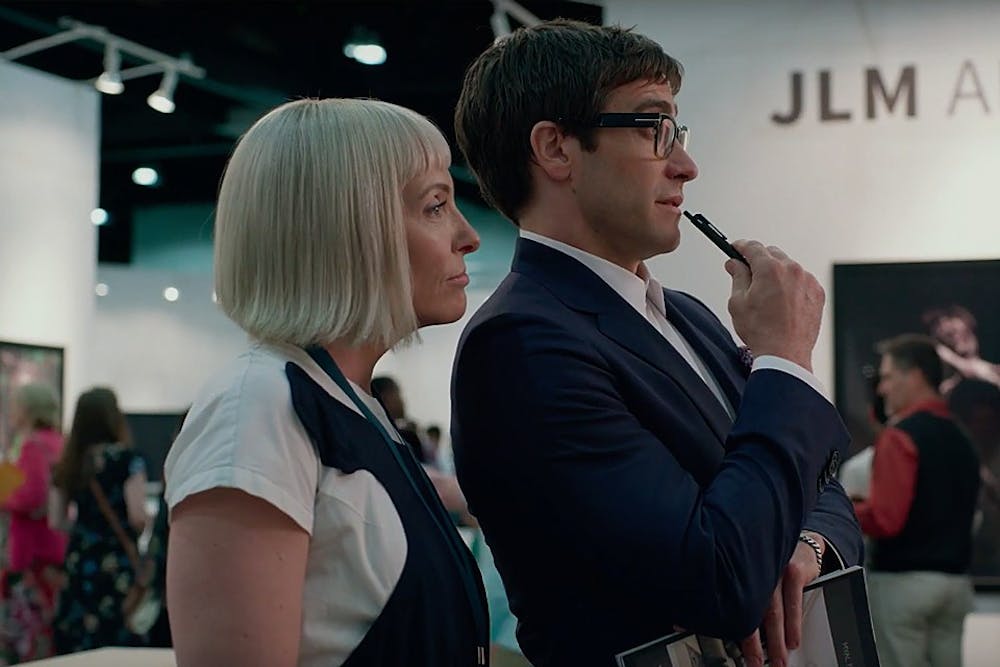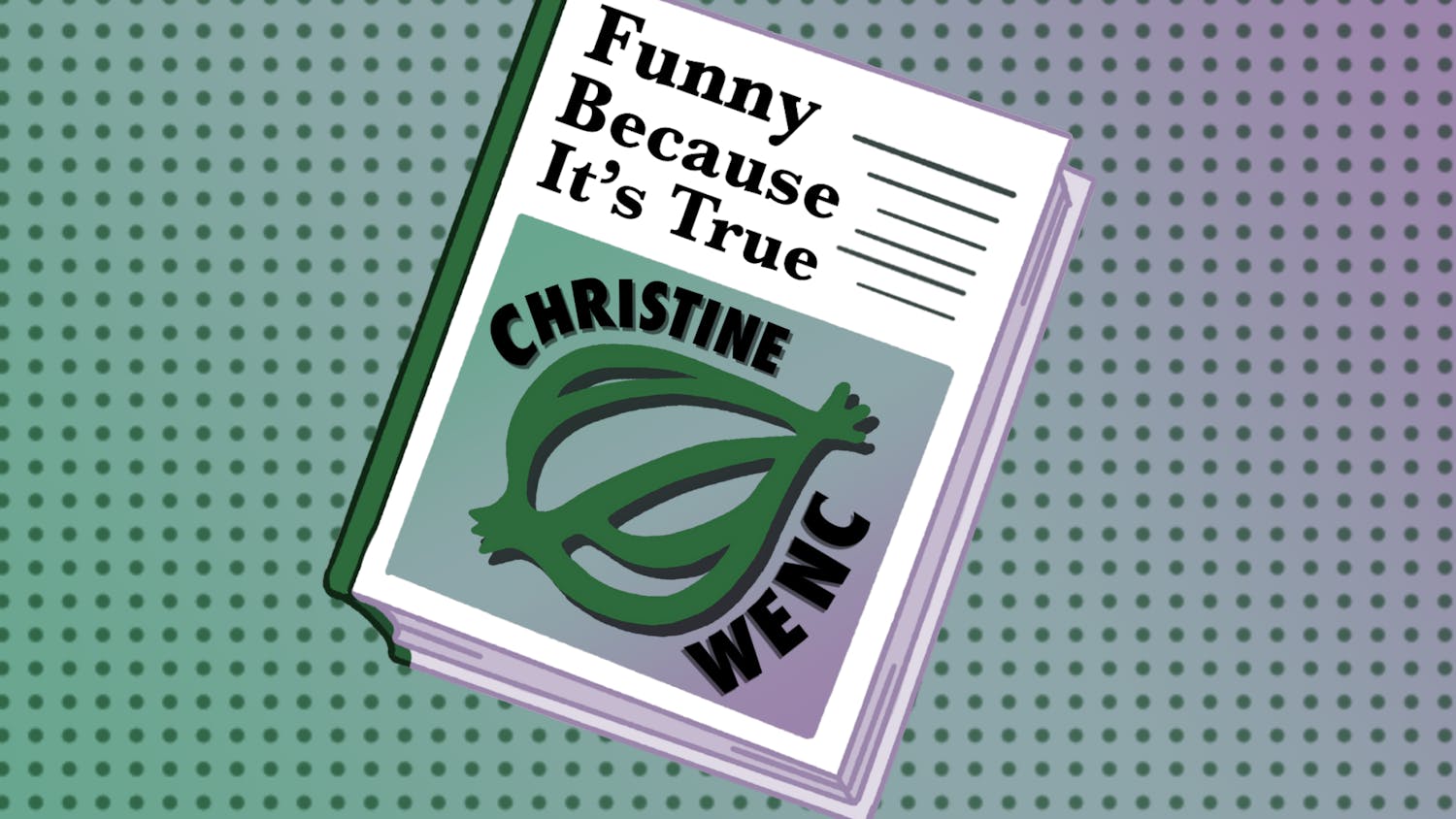Is it possible to stare too hard at something?
As I comb through the marketing (or lack thereof) in the wake of viewing “Velvet Buzzsaw,” I’m repeatedly confounded by director Dan Gilroy’s quasi-epithetic obsession as the creator of the fantastic 2014 neo-noir “Nightcrawler.” In the years following that movie’s tsunami of praise, Gilroy would release “Roman J. Israel, Esq.” with Denzel Washington, and now this, a Netflix exclusive starring Jake Gyllenhaal, Rene Russo, and Toni Collette.
It’s safe to say he’s accrued talent strong enough to move mountains, and yet, these residual installments to the Gilroy-verse are a band apart from what made him a coveted name in the first place. That is, while “Nightcrawler” knows exactly what it is in both grounded characterization and sensical narrative progression, “Velvet Buzzsaw” is a gross juxtaposition to such competency. In the days following my viewing, I’m still struggling to answer what this movie thinks it is, and what it wants to be.
The premise is deliciously vague: an elite group of art patrons acquire an otherworldly collection of paintings from a deceased man who, in the process of dying, attempted to destroy his work entirely. Through their great commercial success, our characters do the exact opposite and are faced with dire consequences. Thus, the plot is set into spooky and somewhat retributive motion.
Now, unfortunately, the trailer reveals not only the mysterious twist to this story, but the fate of most characters, and as such, the film didn’t hit the ground running, but with a sluggish, self-indulgent vignette of experts at work. The first 30 percent of the movie is fine, and just that. We meet our feared art critic (Gyllenhaal), the museum coordinator (Collette), and a persistent art buyer (Russo) as they sashay through a bizarre hodgepodge of ego-stroking encounters, bouncing around wannabe quippy dialogues and feigned elitism like pinballs in a machine. Sure, it’s weird and inorganic, but it’s not BAD; nor is it good; it’s just...fine.

Toni Collette co-stars as Gretchen in "Velvet Buzzsaw".
There is, however, the remaining 70 percent of the film. When it turns out that—spoiler alert—the paintings come to life with an unexplained haunted spirit and incorporate their subjects into murders of the oil-on-canvas variety, the project loses all sense of cohesive identity.
What was once a critique on the ferocity of the art industry—what would’ve maintained a fascinating, if trite social study—quickly becomes an insipid and uninventive picking off of characters. At first, it seems Gilroy is being so on-the-nose as to play with pastiche of campy horror films from the 20th century onward, but even that suspicion of genre homage is too smart for this movie. My heart deflated watching “Velvet Buzzsaw” degrade into slapdash jump scares, foreboding music, and moody lighting that is only made serviceable by a decent cast. Moreover, the evil paintings have no particular significance to the characters; they just happen to be at the wrong place at the wrong time, which makes me wonder why we spend so much time with THESE characters if the evil is indiscriminate to its victims.
By the time the film told me it reached its climax, not only did it feel unearned, but I’d lost any semblance of interest. Up to this point, we still hadn’t learned anything about the spirit of these paintings, nor were we given reasons to care what happened to these wildly unlikable characters. As the credits rolled, I couldn’t manage to conceive a thesis or any argument towards one.
My question to Gilroy, then, is: what the hell is “Velvet Buzzsaw” trying to say? If a discussion on the vapidity of the art world is the goal, its cliche and trope-imbued horror scenes hardly manage to elevate the argument. If it’s trying to buttress the idea of obsession a la “Nightcrawler,” then that can—no—that SHOULD be addressed in a more tasteful and nuanced way. The oeuvres of Damien Chazelle and Nicolas Winding Refn are excellent examples.

Paintings and artwork blend with the supernatural and horrific, but fail to do so successfully in "Velvet Buzzsaw".
But let’s forego, for a second, the terrible writing. There ARE redeeming qualities to this movie; casting, like I said, is a major one. In fact, if it weren’t for the A-level names, “Velvet Buzzsaw” might’ve dug its way deeper into the lore of Netflix’s infamously insulting original film library.
Did I mention the inclusion of Robert Elswit, cinematographer for Paul Thomas Anderson and “Nightcrawler”? Probably not, because even his gilded touch falls short here.
Cinematographically, it displays a stale, soulless vibe that mirrors Direct-to-DVD classics that comprise that misfit subgenre, conducive to awkward lighting, unmotivated camera movement, and perhaps the corniest series of frame compositions I’ve ever seen. Nonetheless, he’s here, he’s made the movie, and his reputation does precede him.
But there, the quality stops. Like I said, there’s a struggle in defining the character of this film, particularly when it spreads itself out thin in each discipline of production. The overall result of “Velvet Buzzsaw” doesn’t feel like a bad movie. It’s so aimless that it actually doesn’t feel like anything. At best, it ignites a staunch R.L. Stine tone that yearns to be taken seriously; just as “Black Mirror” is reductive of the comedic tweet, “what if your mum ran on batteries?” I truly believe Gilroy fell for the same trap that Charlie Brooker so often does: there are certain concepts that just can’t hold their own in feature-length format.
So again, the movie isn’t great, but it’s fine. The sound design and score are fine. The visuals are fine. The story is fine. Everything is lukewarm, and nothing stands out.
However, maybe these reasons I disliked the movie are the very merits justifying its praise. Is “Velvet Buzzsaw” so intentionally shallow and unrewarding as to mirror the arbitrariness of postmodern art? Do I just not “get it,” whatever “it” is? But if that’s the major takeaway, why not just turn to other forms of better, smarter, meta-formal cinema like “The Other Side of the Wind” and “Symbiopsychotaxiplasm”?
And so, I return to that question at the beginning that Orson Welles implanted into my mind: is it possible to stare too hard at something? Sooner or later, the eye sees what it wants—perhaps even conjures what it desires. If we’re to appreciate this moralistic lens in relation to the aimlessness of “Velvet Buzzsaw,” I suppose it’s better to renounce anything altogether and approach life through nihilism, because that’s the only way I can derive sufficient meaning from this splatter-painted canvas of social pseudo-impressionism.
Final Grade: D
Christian Memmo is a film columnist for the Daily Cardinal. To read more of his work, click here.






